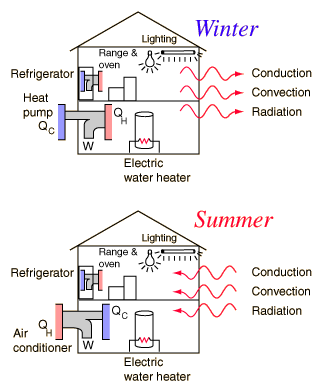I was going to go on a residential energy tear, but then I saw this by another of the Frontmen for everything carbon. I always suggest they suck up on the tailpipe of a car for a couple of minutes to get their priorities straight. Our planet is drowning and they want to lalalalalala all around as the water splish splashes around their feet. AND it is about the housing market…so what the heck.
http://thegwpf.org/uk-news/1912-chris-huhne-in-deep-trouble-as-guardian-turns-against-green-deal.html
Chris Huhne In Trouble As Guardian Turns Against Green Deal
Wednesday, 24 November 2010 13:08 Juliette Jowit, The Guardian
While it slashes budgets, shuts itself off from advice and prioritises economic returns, the supposedly “greenest government ever” is clinging to one of its headline promises: the soon-to-be-unveiled Green Deal. This seemingly simple policy, announced by the Labour government and continued by the coalition, promises to lend the money for an “energy efficiency makeover” to millions of homes in the next decade, to save money on their gas and electric bills and cut greenhouse gas emissions. The energy secretary, Chris Huhne, this month announced the plan would create 100,000 jobs.
Less pollution, lower bills, more jobs: who could argue with that? Except that bills probably won’t be lower. And when customers realise that, will they want to pay for the work that would lower pollution and create the jobs? Perhaps even more damaging, then, is the risk of a public backlash when energy users realise they are paying hundreds of pounds each for a plethora of “government” initiatives to improve energy security and cut global warming emissions.
The problem with the economics of the Green Deal is two-fold. In advance of a government bill before Christmas, the Department of Energy and Climate Change (Decc) will only confirm that up to 14m homes could be treated by 2020, and customers will have 20-25 years to repay the costs, though it is hoped many will do so much sooner. It is also expected that spending per household will be capped at about £6,500, and energy and retail companies asked to deliver the programme are said to be modelling interest rates of 6-8% to cover their borrowing of the capital plus the risk of non-payment.
Meanwhile, a recently published Decc leaflet suggests what different measures will cost and save. According to this, customers with cavity walls (usually in homes built from 1930) could spend just £500 getting their walls and loft insulated, and expect to save £160 a year – recouping what the work cost in less than four years, or a little longer accounting for the loan interest.
However, a mid-range quote for insulating solid walls (internally) and the loft would be £6,250, and the predicted saving £425 a year. Taking a middling interest rate (see above) of 7%, a customer borrowing £6,250 would pay back approximately £875 a year over 10 years, or £530 over 25 years.
What immediately stands out in this example is that the repayments are higher than the government’s estimated saving – implying those customers’ bills would not fall. Decc also assumes a relatively low 15% “rebound effect” – when customers chose to use some of the saved money for extra heating, cooling or more appliances – despite acknowledging by email that it is in reality 15-40%, and a separate estimate by the EU environment directorate of 20-80%.
:}
See they don’t talk about how much coal costs really. I mean if you factor in the costs of the damage done to all of us, and the subsidies all energy companies get…coal is very expensive. More tomorrow. More turkey that is.
:}








